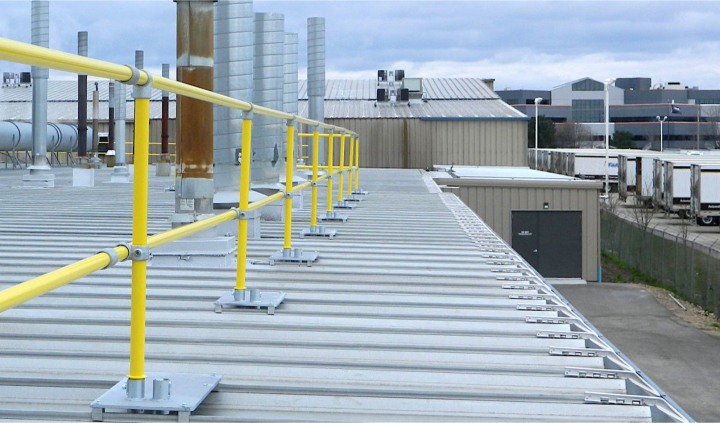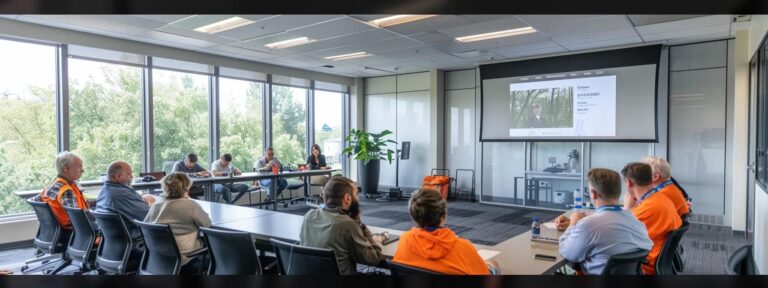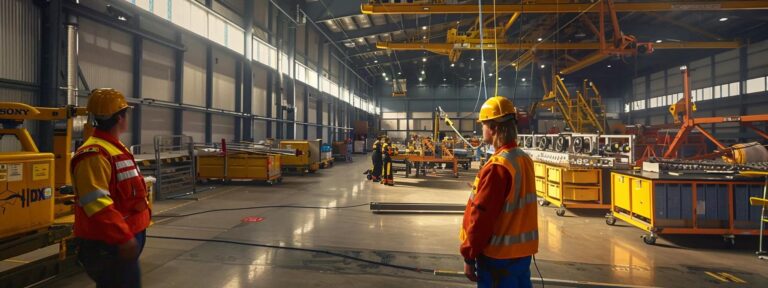Roof safety is a critical concern for businesses operating in high-risk industries, such as construction, utilities, and telecommunications. Falls from roofs are a leading cause of workplace injuries, but with the right roof safety systems, these risks can be mitigated. At US Fall Protection, we specialize in designing and installing guardrail systems and lifeline systems to enhance roof safety. In this blog post, we’ll compare these two systems, explore their benefits, and explain how US Fall Protection ensures compliance and safety for the industries we serve.
What Are Roof Safety Systems?
Roof safety systems are designed to protect workers from fall hazards while working on rooftops. These systems include a variety of solutions, such as guardrails, lifelines, anchors, and walkways, each tailored to specific workplace needs. OSHA requires employers to implement roof safety systems whenever workers are exposed to fall hazards of 6 feet or more in construction or 4 feet or more in general industry.
At US Fall Protection, we offer comprehensive roof safety solutions, including guardrail systems and lifeline systems, to ensure compliance and worker safety. Let’s take a closer look at these two systems and how they compare.
Guardrail Systems: Passive Protection for Roof Safety
Guardrail systems are a passive form of fall protection, meaning they require no action from workers to be effective. These systems consist of top rails, midrails, and toeboards, designed to create a physical barrier around the perimeter of a roof or elevated surface.
Key benefits of guardrail systems include:
- Ease of Use: Workers don’t need to wear harnesses or attach to anchor points, reducing the risk of human error.
- Cost-Effectiveness: Once installed, guardrails require minimal maintenance, making them a long-term investment in safety.
- Compliance: Guardrails meet OSHA standards, such as 29 CFR 1926.502, ensuring your workplace is compliant.
Guardrail systems are ideal for fixed locations, such as flat roofs, mezzanines, or platforms, where workers need consistent protection. At US Fall Protection, our guardrail systems are custom-designed to withstand harsh environmental conditions and meet the unique needs of the industries we serve.
Lifeline Systems: Active Protection for Roof Safety
Lifeline systems are an active form of fall protection, requiring workers to use personal protective equipment (PPE), such as harnesses and lanyards, attached to anchor points. These systems can be vertical or horizontal, depending on the work environment.
Key benefits of lifeline systems include:
- Flexibility: Lifeline systems allow workers to move freely while remaining protected, making them ideal for dynamic work environments.
- Versatility: Lifelines can be installed on sloped roofs, curved surfaces, or areas where guardrails are impractical.
- Compliance: Lifeline systems meet OSHA standards, such as 29 CFR 1926.502(d), ensuring worker safety and regulatory compliance.
Lifeline systems are ideal for workers who need mobility, such as roofers, maintenance crews, or telecommunications technicians. At US Fall Protection, our lifeline systems are designed to provide maximum safety and flexibility, tailored to your specific needs.
Guardrail Systems vs. Lifeline Systems: Which Is Right for You?
Choosing between guardrail systems and lifeline systems depends on your workplace needs, budget, and compliance requirements. Here’s a quick comparison:
- Guardrail Systems: Best for passive protection, requiring no worker action. Ideal for fixed locations with consistent fall hazards.
- Lifeline Systems: Best for active protection, offering flexibility in dynamic work environments. Ideal for workers who need mobility.
In many cases, a combination of both systems provides the most comprehensive roof safety solution. For example, guardrails can be used around the perimeter of a flat roof, while lifeline systems can be installed for workers accessing sloped or interior roof areas. At US Fall Protection, we assess your workplace to recommend the best combination of systems, ensuring compliance and safety.
How US Fall Protection Enhances Roof Safety
At US Fall Protection, we take a holistic approach to roof safety, offering end-to-end solutions that cover every aspect of fall protection. Our process includes:
- Consulting: We conduct thorough risk assessments to identify fall hazards and recommend the best solutions.
- Design and Installation: Our in-house experts design and install OSHA-compliant guardrail systems and lifeline systems.
- Annual Maintenance: We provide fall protection annual maintenance to ensure your systems remain effective and compliant.
Our solutions are trusted by industries ranging from construction to telecommunications, as highlighted in the industries we serve. Ready to enhance your roof safety systems? Get a free quote today.
Both guardrail systems and lifeline systems play a critical role in enhancing roof safety systems. By partnering with US Fall Protection, you can ensure your workplace is safe, compliant, and efficient. Explore more safety insights in our blog and contact us to get a free quote today.




